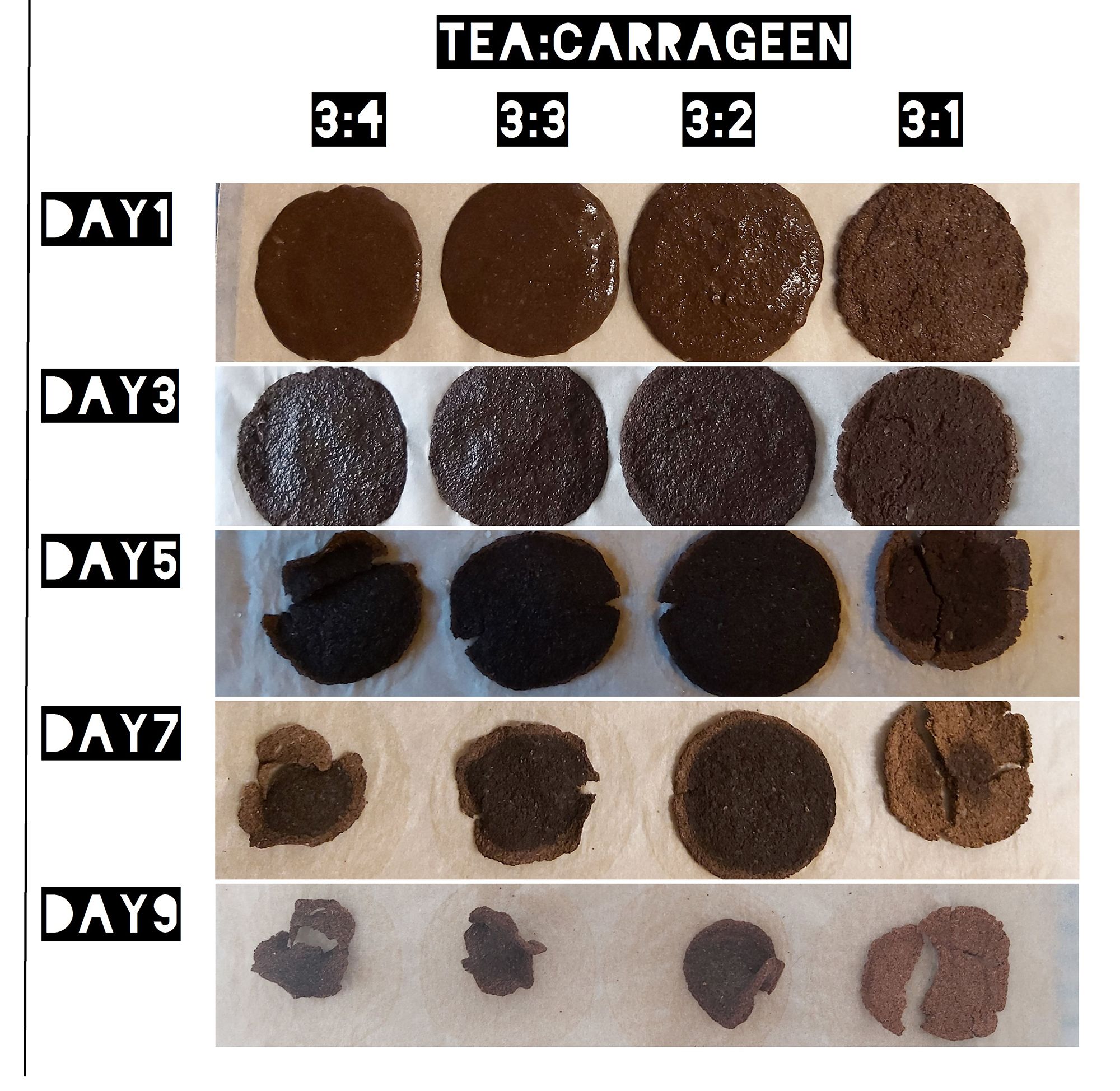
BA (Hons) Product and Furniture Design, Camberwell College of Arts, UAL | Photograph: Lora Aleksandrova


Lora Georgieva Aleksandrova graduated from BA 3D Design at Camberwell College of Arts this summer.
Her final submission, titled An Alternative Practice, is an open-ended project which focuses on the process of using natural materials to produce environmentally-friendly objects.
Lora’s current outcome is a contemporary artwork piece. We spoke with her to find out what inspired her to explore the possibilities of sustainability.

I am concerned about the waste we as designers produce while working on a project. Even though the goal could be to create a sustainable object, the process still involves tests and models, which get thrown away and turn into waste.
I wanted to change my own practice through this project which is why I called it An Alternative Practice. I was trying to create material out of discarded tea and carrageen (Irish Moss). However, while working, I realised that sustainability is a tricky subject. And even sustainability leaves some footprint on the environment. After I came to that conclusion, my project switched direction. Rather than trying to create a practical object of the material, I wanted to show the fragility of sustainability.
The background is an essential part of the piece. I used the pieces of paper which got stained during the drying of the material. They are a symbolic sign of the footprint of sustainable practice.
As it is my last project in university, I wanted it to be the climax. And in order for it to be, I knew I had to do something I haven’t before. I had already decided it would be a project revolving around sustainability. I was thinking about the materials I could re-use or up-cycle through the project. However, I couldn’t come to a satisfying answer to the question of what would the after-life of my object be. The answer was always – it will turn into waste because I was only extending the life span of the material, not changing anything.
At that time, I found a book called Why Materials Matter by Seetal Solanki. It is a collection of sustainable projects. One of them had an impact on me – the Lupine project. It’s a project aiming to turn lupine, a weed, into usable material. I liked the idea of transforming something people want to get rid of into something beneficial. Reading more about their project made me realise that design is not simply about the shape but the material.

Unconventional. Using waste could be a burden and using waste while trying to keep your practice sustainable is even harder.
I call it unconventional because putting sustainability as a priority can often lead you the long way of achieving your goal. It makes you explore new ways of thinking and making but could also be troublesome if all you want to do is go from A to B. I would say that my practice is all about the possibilities of creating rather than the final object itself.
A big part of the project was the establishment of a process of work. Therefore, most of the time, my process involved a lot of trials and failures. I started the project with something familiar - making paper out of plants. Soon after, I introduced carrageen to my project, which served as a bonding agent. I switched from plants to discarded tea because of the need for a stable source of materials. My ideal scenario was to ask cafes if they could collect the tea bags for me. Unfortunately, that was not possible due to the virus.
My process was rather simple, I would cut open the tea bags, empty them in a tray and leave them for a day or two as this would prevent them from moulding. The second part of the process was mixing it with carrageen gel, which is made by boiling the seaweed. The risky part was the drying. If it couldn’t dry quick enough, it resulted in getting mouldy. Leaving it dry in sunlight was perfect but not always available. I had to be creative. I tried putting it in the oven on low heat, putting it between two sheets of paper and ironing on top of it, as well as placing it on a radiator and using electric heather as an additional source of heat. It was interesting, that the qualities of the material changed based on the method of drying. Unfortunately, drying it artificially took hours, which isn’t sustainable due to the excessive usage of electricity.

The variety of the projects we had to work on was incredible. I enjoyed the unfamiliarity I faced while working on some of them as I had to adapt and learn new skills in order to fulfil the project.
I had the opportunity to learn new skills, which I would not necessarily have if I fixated on my area of interests.
The seminars were another thing I enjoyed. They allowed me to meet and get to know a variety of practitioners.
My views on design changed drastically. I started from a place of excitement to try every material possible, to completely rejecting to work with any of them. My understanding of sustainability was a major cause for that, which also reflected in my final project. I would say that I grew as a designer, and my practice also changed with me.

I would tell them to come with an open mind. If they have plans for their future after university - great! However, they will most likely change by the end of the course. I would advise them to enjoy the journey of discovering what type of designers they want to be.
Telephone
+44 (0)20 7514 6302